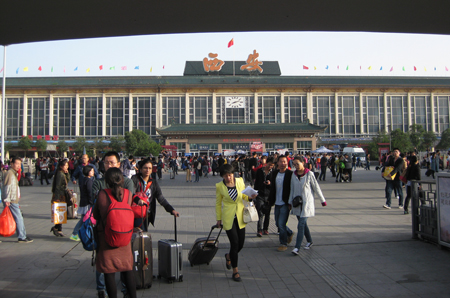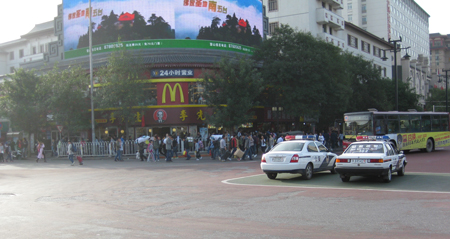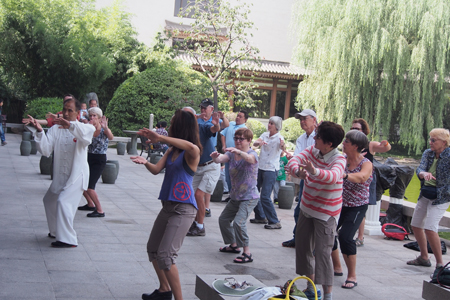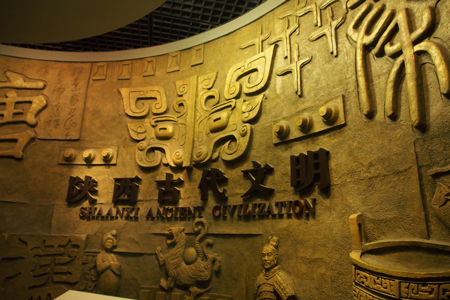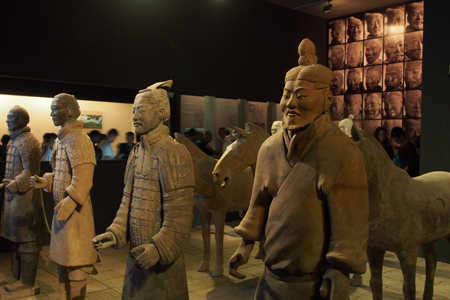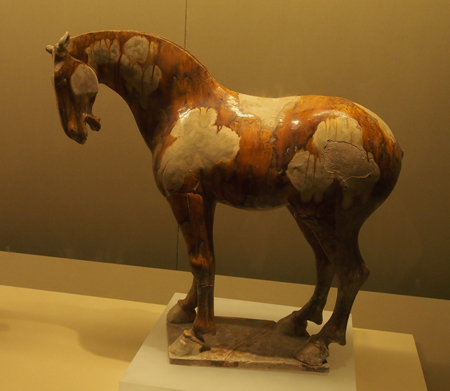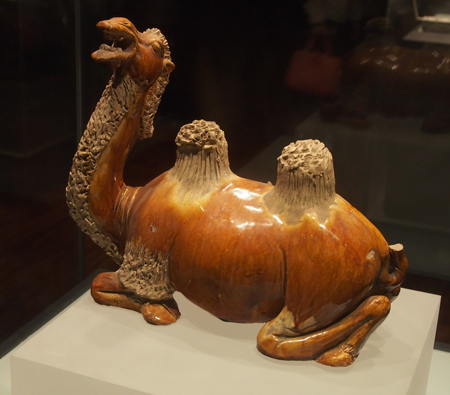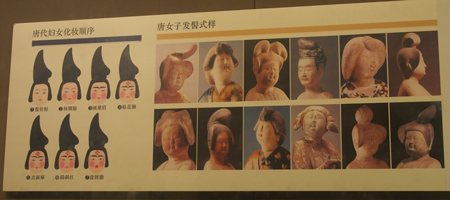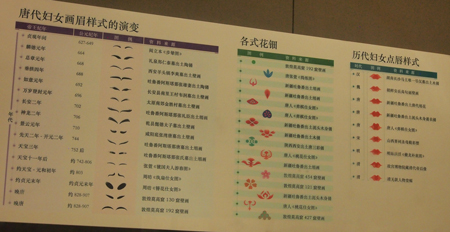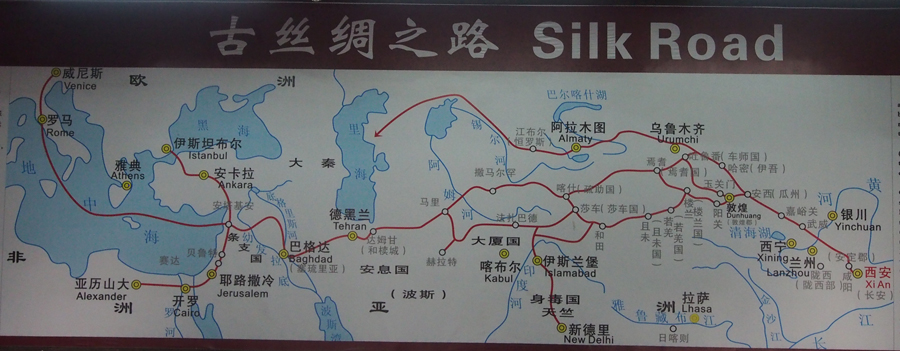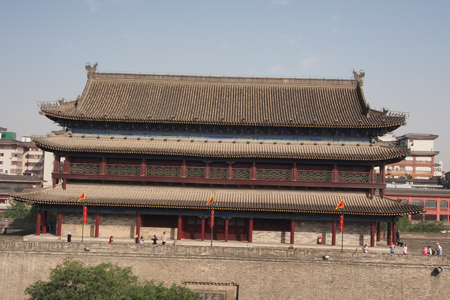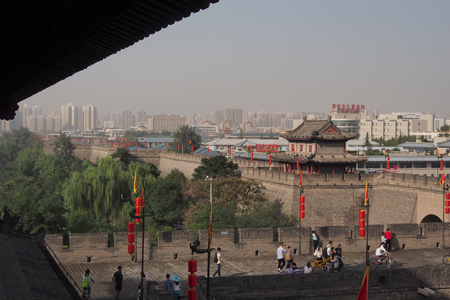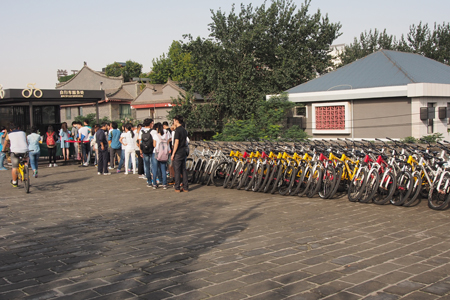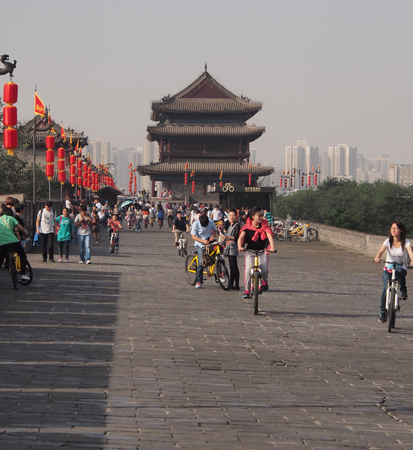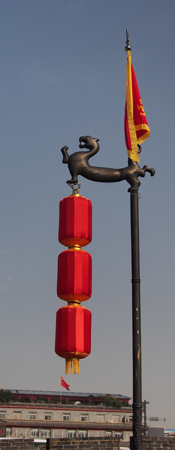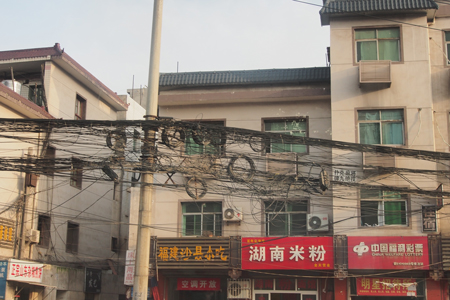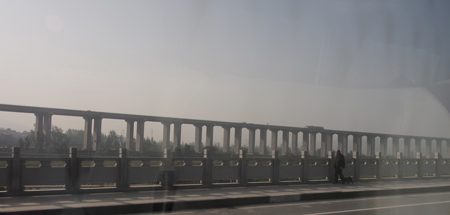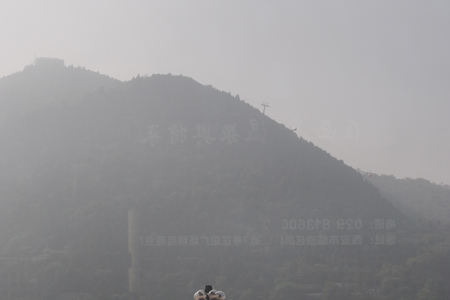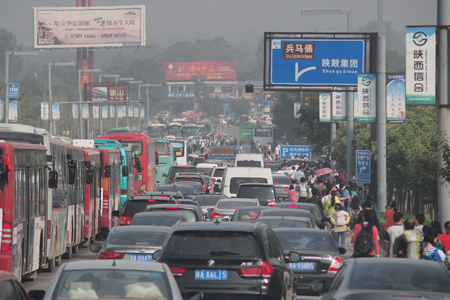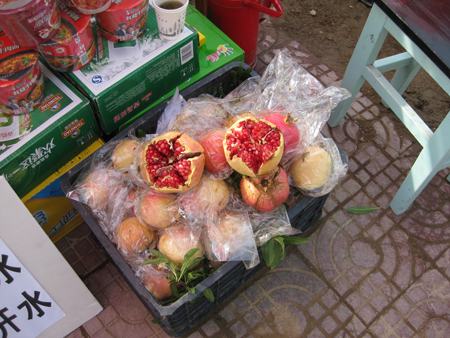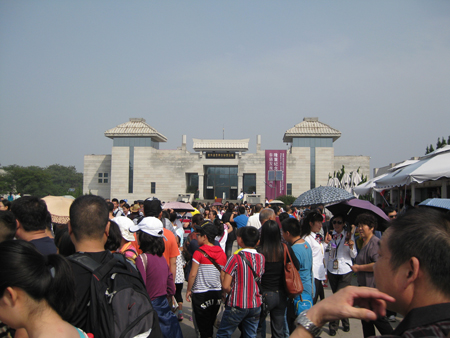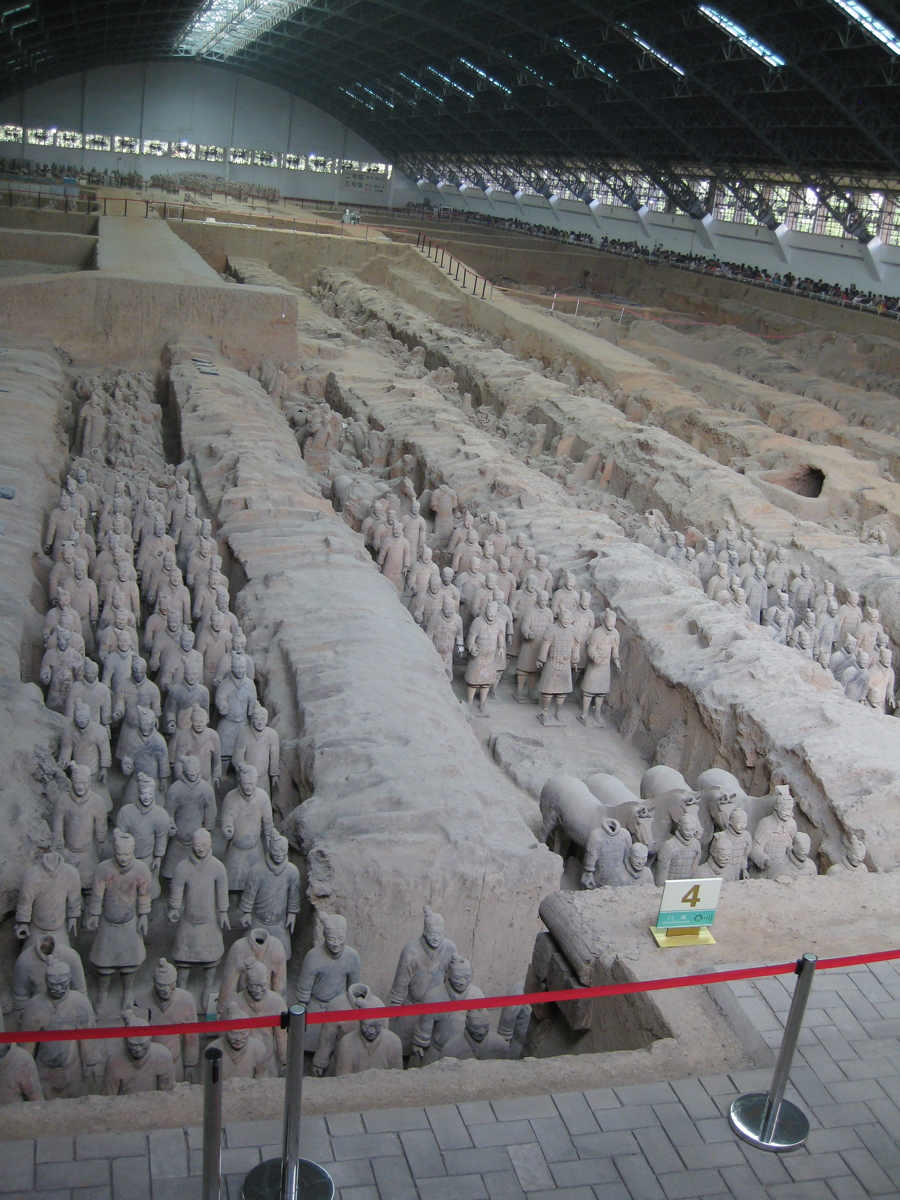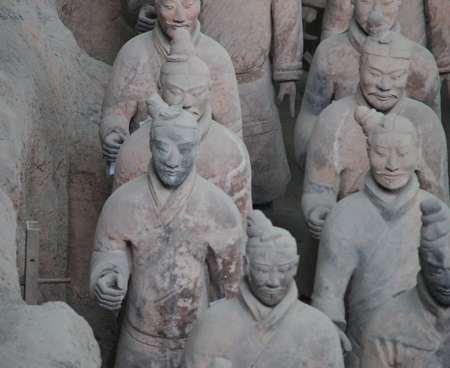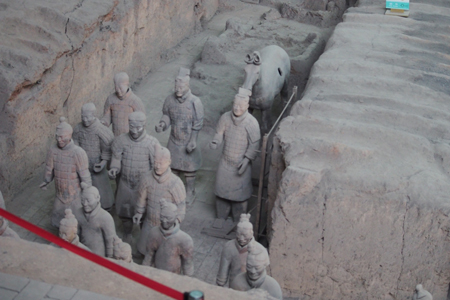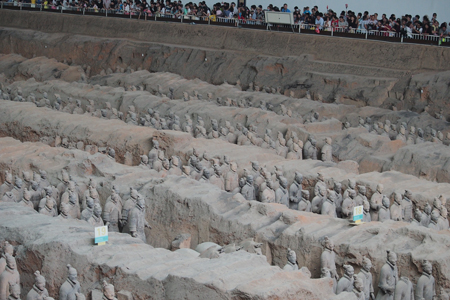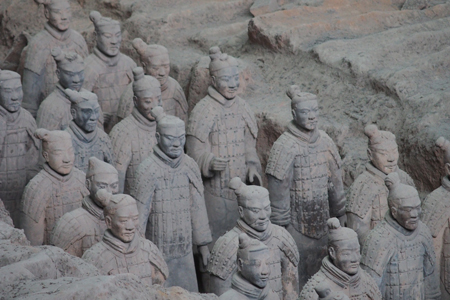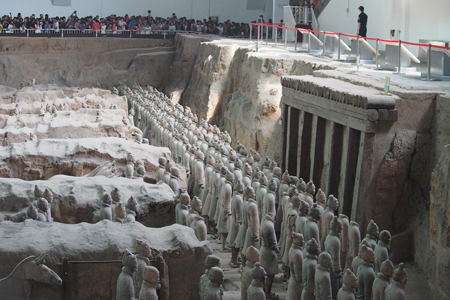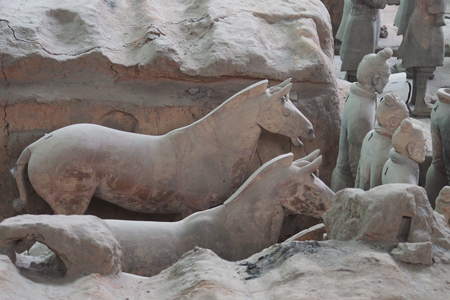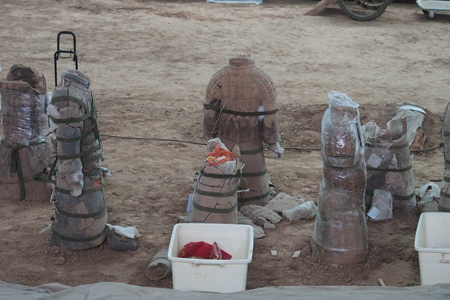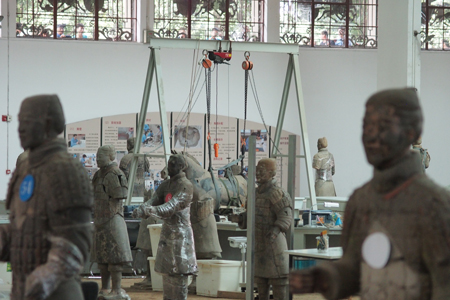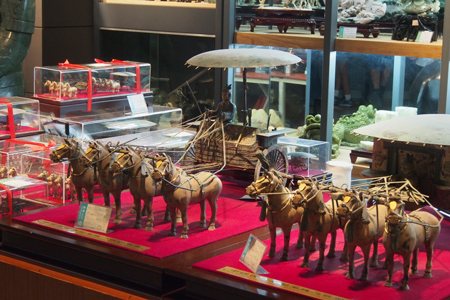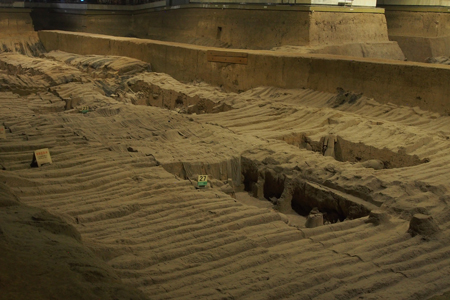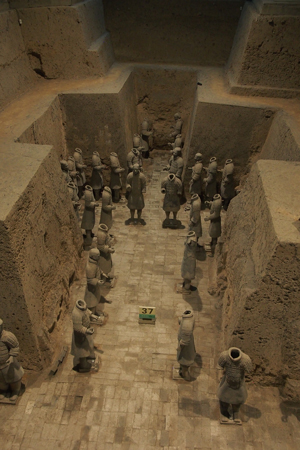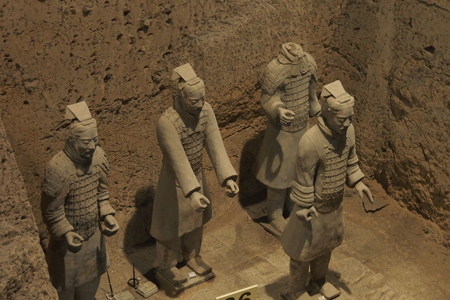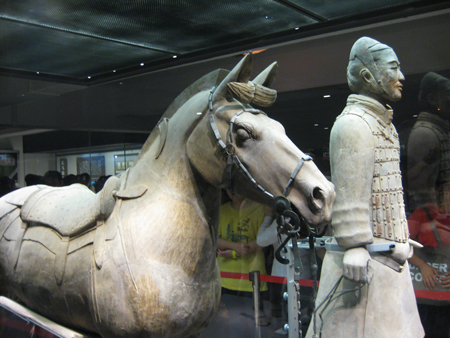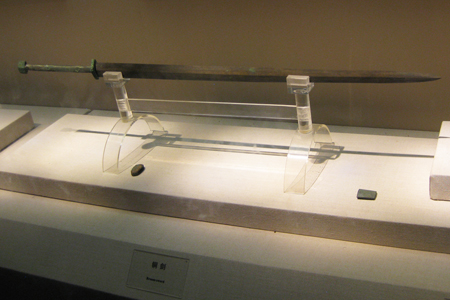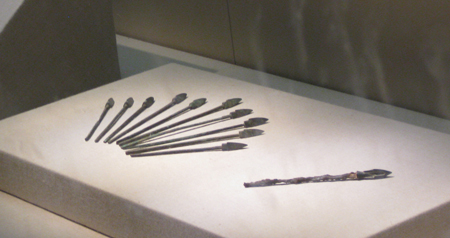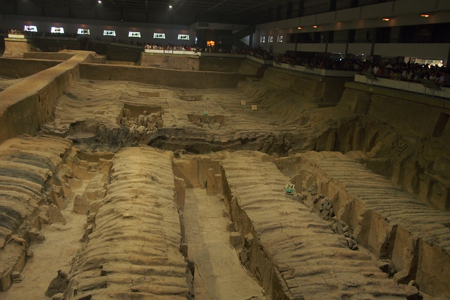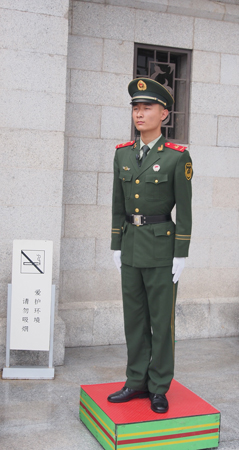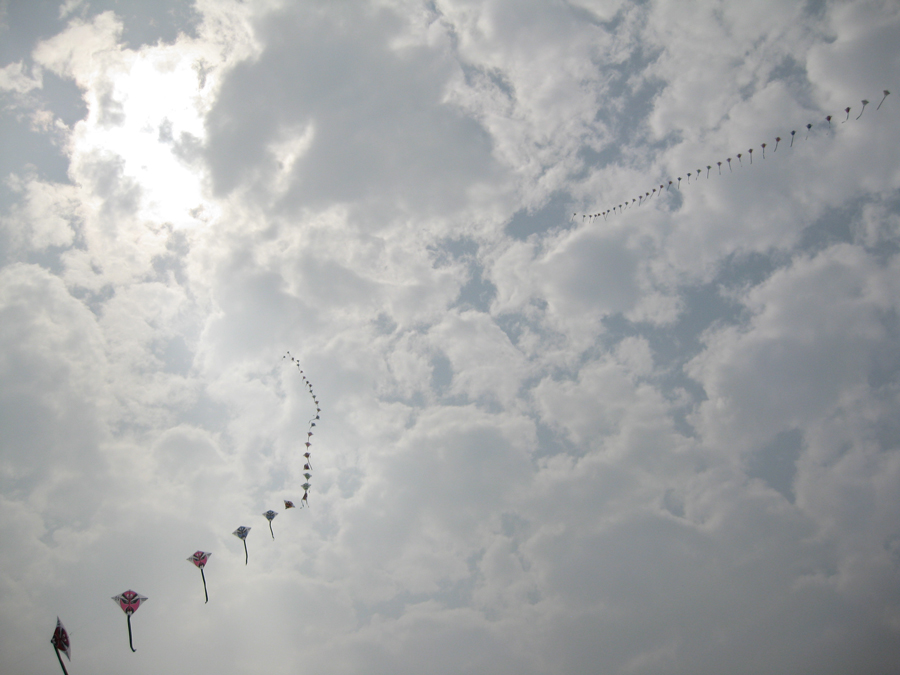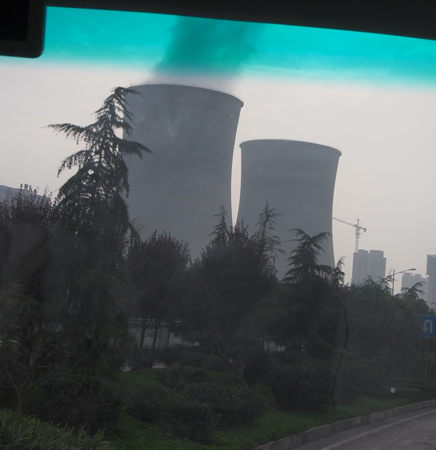Thurs., 10/2/14 – Xi’an
We woke up to a dense fog so we could not see the agricultural fields as we approached Xi’an. The train arrived at the station right on time at 8 AM. We walked a long way through the station and through mobs of people to find our bus, which took us to a really nice hotel, Xi’an Garden. Since our rooms were not ready yet, we went straight to breakfast. This was a first class buffet with both Chinese and Western food. It was nice to have real fried eggs for a change. We ate a lot because we were to miss lunch and have an early, Mongolian hot pot dinner.
Xian train station
And right across the street!
Tai Chi lesson
First event was a Tai Chi demonstration. They had our group try several moves from his 36 move sequence. His style of Tai Chi was like shadow boxing more than balancing poses to move his “chi” around.
Next was a tour of the Shaaxi Museum. The province of Shaanxi is a very old area (3000 years) along the Yellow River Valley and was the eastern end of the Silk Road. The museum exhibited relics from 3,000 years ago in this area. The museum houses many excellent displays but unfortunately for us, the displays were low in glass cases, maybe 2 or 3 feet above the floor. When you have 3 or 4 or 5 people deep in front of the display and only the front people could see or read about the relic, we could not see very much. When I say it was mobbed, I mean there was no open space in any of the galleries. Yeah for the Chinese National Holiday!!! At least it seemed that many teen and 20-year-old locals were interested enough in their ancient history to visit this museum on their holiday. Some of the Terracotta Warriors (again, various spellings: Terra Cotta, etc.) and their horses were on display. It was as near as we will get to them. Some of the statues of men, women, horses, and camels were wonderfully preserved. The Chinese used green, yellow, and rust colors to paint their clay and pottery figures and dishes.
Shaanxi Museum
Shaanxi Museum - Terracotta Warriors
Hair styles
Makeup styles
Next we went to the Xi’an city wall. The wall forms a rectangle around the old city. It is the only complete city wall in China. It is referred to as the “Greater Wall” compared to the Great Wall we climbed on when we were in Beijing. We climbed to the top of the wall at the West Gate. There are two barracks at this gate and this was the start of the Silk Road. We walked along the wall and could not see the moat that encircles the outside of the wall because of the trees and gardens between the two. Inside the city wall is a tall, seven-stack bell tower and a drum tower. The bells were rung during the day and the drums were banged at night to tell time.
Part of the barbican or defenses
View from the building on the left
Bicycling along the wall is a favorite activity
Lots of cyclists of varying ability!
Decorations
We went to an early dinner of Mongolian Hot Pots. We each had a pot of boiling broth heated by Sternos. On the Lazy Susan we had thin sliced beef and lamb, crab meat and fish balls, noodles, 4 kinds of cabbage and greens, and tofu. We selected our dipping sauce (mashed garlic, soy sauce, sesame oil, etc.) and put it in a bowl. Then we selected meat, noodles, or cabbage cooked them in our hot broth and then dipped whatever in the sauce before eating it. It was fun but took a long time to cook and eat what all we wanted. For dessert we had “golden bread” dipped in condensed milk. It was very good and we asked for more.
Mongolian Hot Pot meal
Electrical jungle
Fri., 10/3/14 – Xi’an & Terracotta Warriors
We left the hotel early this morning, trying to beat the mobs of traffic and went to see a jade factory and demonstration on our way to the Terracotta Warriors site. There is a large jade mine near Xi’an. A representative explained about jade and showed us three women carving jade objects using a machine like a dentist drill and then we went to the showroom and saw the difference between natural and enhanced jade. We looked at jewelry but the natural jade pendants or earrings cost around $3,000 so we decided to buy a “happy family ball.” It is three carved balls inside each other. It will be our treasure from this China trip.
Jade sculpture
Carving a "happy family ball"
Jade sculpture
"Happy family Balls"
Typical Chinese elevated highway in the background - they build many of these
Pollution - you can hardly see the shrine on the hill
Traffic all heading to the Terracotta Warriors site
Pomegranates for sale
Persimmons
Entrance to the site
The mobs of Chinese at the Terracotta Warriors area were a clue to the fact that it is estimated that half of the Chinese population of 1.4 billion people goes touring during this holiday week. Calling the museum crowded is an understatement. People were 6-8- and 10 deep at the railings around the pits containing the warriors. The only way to see and take pictures was to shove your way in along with everyone else. Not pleasant, but necessary if you were going to see anything. The fact that it was a very hot day didn’t help. That being said we completed our tour and saw what all we came to see.
I encourage you to go to and read the link above which describes how the warriors were discovered and preserved, as well as their history.
Terracotta Warriors - Pit 1 which contains about 6,000 figures
All the faces are different!
There were LOTS of people there
Even horses were included
He is not too interested!
Restoration
Block and tackle in the background for lifting statues
The warriors were archers, chariot drivers with their horses, and infantrymen. Their feet and lower legs are solid, the body hollow, and the heads made separately. The bodies were formed with clay molds or clay rope and baked in kilns fired with wood. Each face is different. Each soldier weighs between 200 and 400 pounds. There are 8,000 soldiers and horses and each was originally painted with mineral paints. Unfortunately the paints fade with oxidation, so few have any color remaining.
Model in Building 2
Pit 2 has less excavated figures - about 2,000 of them
Sword plated with chrome and made 2,200 years ago. No one knows how someone was able to make chrome that long ago.
Arrowheads
Building (or Pit) 3 is mostly a museum and was too dark to get any decent pictures.
In spite of the crowds, this was one of the real highlights of this trip!
Chinese guard
Kites against the sky
Supposedly a coal-fired electrical power station
In the evening, we went to a dinner theater for dim sum and watched Tang Dynasty style dances. We had appetizers of rice noodles, cabbage and cucumbers, and then at least eight baskets of different dim sums. Then there was soup and watermelon, pecan balls, custard tarts, and cookies. There was way too much food. The show was colorful and unique. There were nine dances introduced with English subtitles on which the grammar and spelling were quite original. The dances were: Sword Dance, Pozhen, Spring Flowers on the Moonlit River, Lu Yao, Drum Dance (Yan Yue), Thousand Hands Buddhism, Surrounded from All Sides, The Imperial Feather Dance, and Moonlit View of Qujiang. The throat whistler and horn player and the woman who played a lute-like stringed instrument were the best entertainment. The dancers did some acrobatics but most of the dances were hand movements.
More dim sum
Tang Dynasty style dance
Tang Dynasty style dance
Tang Dynasty style dance
Tang Dynasty style dance
Tang Dynasty style dance
| Return to Top | Return to Itinerary | Return to Trips page to view other trips | Return to Dreamcatcher Home Page |
